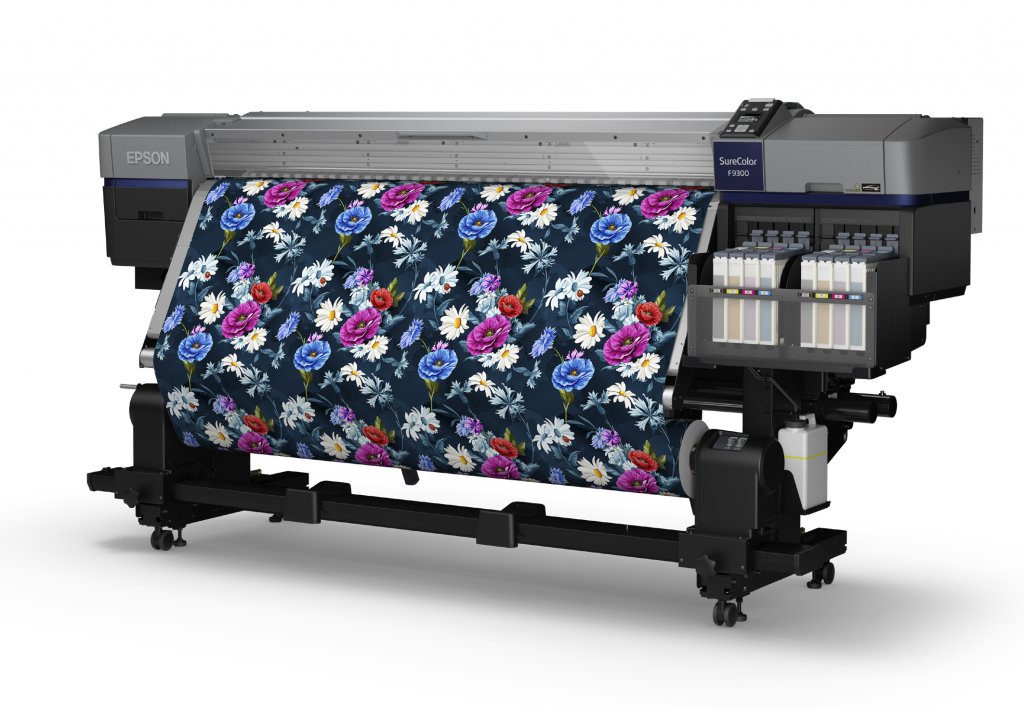One of the most common ways to transfer images to fabrics is the dye sublimation printing service. This is how they print on fabrics for T-shirts (synthetic), for sports uniforms, bags, backpacks, flags, curtains and other textile products. This is an inexpensive and relatively simple printing method that allows you to make any number of things.
TECHNOLOGY FEATURES
When heated, dyes sublimate, resulting in sublimation printing process. When pigments enter a gaseous state while penetrating into textile fibers or deep into another substance, a condensation process occurs, and the treated surface is painted as a result. Sublimation is done at a high temperature, so that the fabric on which you want to apply the picture heats up and shrinks a little. In this case, the coloring particles, as it were, are soldered together with the material being processed and become part of it. As a result, the drawings are bright, resistant even to frequent washing and the sun. Sublimation printing technology is used to print almost any synthetic fabric.
WHAT MATERIALS CAN BE PRINTED ON
Synthetic fabrics are better than others for sublimation printing. When heated, they become slightly loose and absorb ink well. Fabrics woven exclusively from natural fibers do not have such good penetration, so blended fabrics with a polyester content of 60% or more are suitable for printing.
Very well suited for applying images with the sublimation method of satin. This is a dense and durable fabric on which the pattern holds well. Taffeta is often used to make flags. For interior decor, sublimation can be printed on microfiber.
With sublimation transfer, the image is obtained penetrating to the wrong side. But you can apply images on both sides, for which you need a blackout fabric – dense and not letting in light.
Sublimation is used to make uniforms, souvenirs, corporate products. With its help, you can apply pictures and texts on fabrics for textile products of almost any shape and with any texture.
TYPES OF SUBLIMATION PRINTING
This seal is either direct or indirect.
Direct sublimation means that the dyes are mixed and heated inside the printer. The picture is applied immediately to the finished product directly. With the wet method, the surface on which the image will be applied is treated with a primer, and then covered with ink by an inkjet printer. Dry printing is performed by a laser printer designed for this purpose.
Indirect sublimation printing is the same as thermal transfer. First, a mirror image is printed on a special printed paper with silicone, then the paper is pressed against the surface and the pattern is transferred to it using a heat press.
EQUIPMENT AND MATERIALS FOR PRINTING
First of all, sublimation printers are required for work. They must be equipped with a continuous ink supply system – CISS. This is much more convenient than using conventional cartridges. The system can have 4 or 6 colors. Devices with 4 colors are easier to maintain, they rarely clog and require cleaning. But six-color ones allow you to get a more natural, natural pattern.
Sublimation uses special inks. Different manufacturers may have different shades, so you need to do a test print to be sure of the chosen gamut.
Sublimation papers are also varied. It comes in matte or glossy. Matte is more often used for printing on ceramics, and glossy – on fabrics.
For work, heat-resistant adhesive tape is also used, with which the picture is glued to the surface. It is especially needed for working with surfaces that are complex in shape or texture. Sometimes the most ordinary masking tape is used instead.
PROS AND CONS OF THE SUBLIMATION METHOD
The advantages sublimation are:
- photographic clarity, the ability to apply small drawings, high-resolution pictures, complex graphics, a large number of colors and details;
- the text or picture is resistant to fading, fading in the sun, washing;
- sublimation printing is possible in any circulation – from small to large;
The disadvantages include:
- the need to accurately select consumables to obtain a high-quality image as a result of printing;
- more suitable for light and plain fabrics;
- best seen on synthetic materials.
Taking into account all the features, sublimation printing technology is suitable for transferring images to fabrics with a high content of synthetic fibers in a light shade. It allows you to quickly print clear and bright patterns on fabrics that can withstand negative external influences, remain colorful and well read even after numerous washings or being in the bright sun. The technology involves the transfer of special paints under high temperature and pressure, but without the preparation of stencils or other auxiliary parts, so it is relatively cheap and fast. Printing on dark fabrics with less synthetic content is also possible, only the colors are darker than the fabric. In sublimation, there is no white color, so instead of white, there is the color of the base of the fabric.
SUBLIMATION PRINTING IN DALLAS
You can order sublimation printing on fabric for textile products from us. We use professional printing equipment and special dyes. Our production facilities allow us to print in bulk and fulfill orders quickly. We work according to the sketches of the customer and also provide assistance in developing or finalizing the layout. We will help you choose the color scheme so that the drawing looks spectacular and natural. To find out more, calculate the price and place an order, call us.
